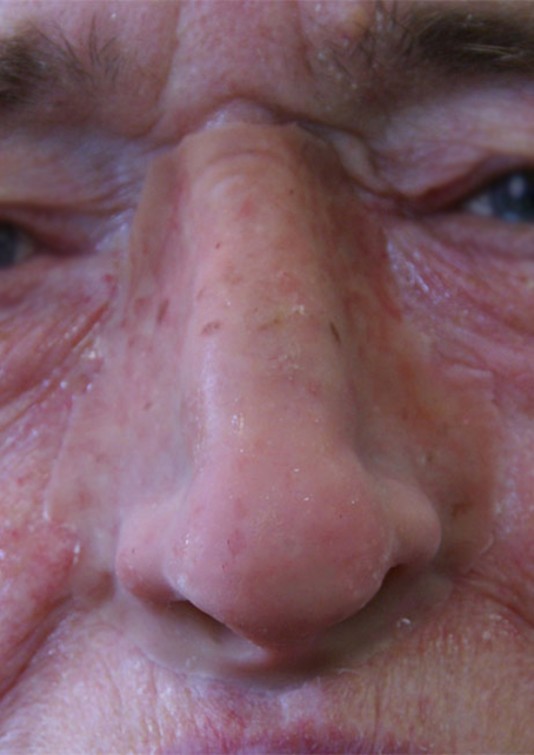Voxels, not topology, allow the software to create smooth organic shapes from a CT scan.

Design software capable of modeling organic shapes from a medical CT scan the way one works with clay made it possible for a medical team to product a lifelike prosthetic nose rated superior to a conventional equivalent. The nose was created by CARTIS, the Centre for Applied Reconstructive Technologies in Surgery in Wales, using Sensable’s Freeform3D organic design and manufacturing solution.
Sensable approaches modeling differently than typical CAD solutions, which are primarily used to design smooth, prismatic shapes required by typical manufactured products. Freeform represents models in voxels—volumetric pixels—and is designed for exactly the task of complex organic 3D modeling and preparing those models for manufacture.
Using new Freeform version 11, the CARTIS team designed the nasal prosthesis for a man who had basal skin cell cancer. The nasal prosthesis is made of a solid elastomer and retained on the face by two magnets which were surgically implanted into the bone of the patient’s face.
The CARTIS team started with a CT scan, instead of requiring the patient to endure a time-consuming and uncomfortable session where plaster would be applied to the face in order to obtain an impression. The CARTIS team then used Freeform to design the molds, which were rapid prototyped and then used to produce the prosthetic in an elastomer material. This all-digital approach gave the CARTIS team a more flexible work environment, reduced the overall prosthesis design time and reduced what was a 3-day consultation process down to two significantly shorter visits for the patient. Reducing the length and number of visits is especially important for patients who are in pain and heavily scheduled for radiation and/or chemo treatments.
During the design phase of the prosthetic, Freeform made it easy to carve away an additional 1-2mm in depth around the entire area where the prosthetic would sit. This ensured an excellent ‘pressure fit’ – allowing the thin edges of the prosthetic to press tightly against the skin and conform to the patient’s face.
What we think
The traditional CAD programs we write about here are great at designing machines, cars, toasters, and playground equipment, but the countours of body parts are a different story. The CARTIS team needed a software tool that could create finely sculpted curves, gentle feathering of the edges of the silicone prosthesis to the maximum thinness of 0.04 millimeters that the material could support, and textural details like wrinkles, creases in the bridge of the nose and skin pores that make the prosthesis appear lifelike.
Sensable Freeform made it possible for the designers to simply tug, extrude or pull upon one section of the 3D model to naturally and artistically shape the prosthetic according to the way the patient’s nose looked prior to surgery. Trying to do this in SolidWorks or NX would cause the rest of the 3D model to become distorted because the adjustment would disrupt the geometric relationships used to calculate the rest of the surface of the model. Because Freeform removes the constraints of topology of traditional CAD modelers, the CARTIS designers were free to shape the nose in any way as they sculpted by “feel” using Freeform’s haptic (force-feedback) device instead of a computer mouse. This case study is literally a case of different strokes for different folks.





